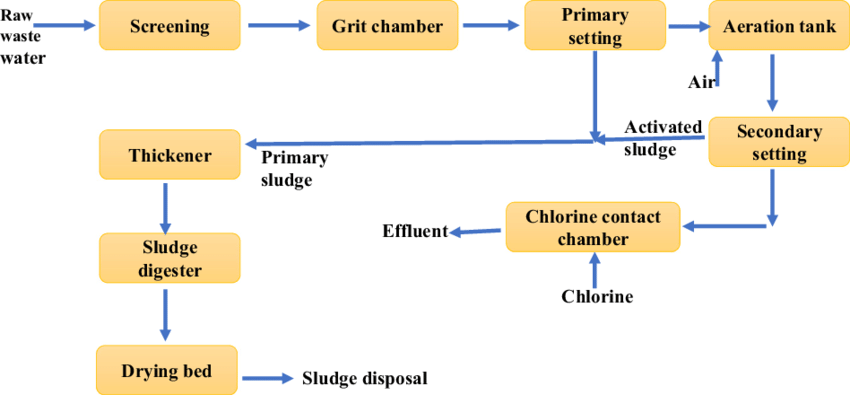How Reclaim Waste can Save You Time, Stress, and Money.
How Reclaim Waste can Save You Time, Stress, and Money.
Blog Article
Some Known Details About Reclaim Waste
Table of ContentsThe 6-Minute Rule for Reclaim WasteGetting My Reclaim Waste To WorkThe Main Principles Of Reclaim Waste 10 Simple Techniques For Reclaim WasteSome Known Questions About Reclaim Waste.
Discover the types, occurrences, and types of liquid waste. Residential sewer waste describes the waste and products from a residential sewage-disposal tank. This kind of waste is produced by human beings in houses, schools, and various other buildings. This only includes septic systems that have a drain field. The proper monitoring and disposal of domestic sewage waste require fluid waste to be transferred to a sewer therapy plant where the proper techniques and equipment are used to purify and get rid of waste.
Commercial waste often consists of possible threats, such as flammable products or a combination of fluid and solid waste products, and requires an advanced and in-depth disposal process. The disposal of industrial waste commonly entails the filtration of waste prior to transportation to ensure risk-free and correct disposal. Industrial waste is produced from by-products and drainage of industrial processes and production.
This sort of waste can not utilize the very same sewer monitoring transportation or processes as septic or industrial fluids. The hazardous waste monitoring procedure requires the examination and screening of fluid waste prior to it undergoes the disposal process (liquid waste removal). Runoff waste is the liquid waste that comes from runoff and excess stormwater in extremely inhabited locations or cities
Runoff waste can cause contamination and flooding if not dealt with appropriately. Ensuring proper waste administration can protect against disasters and minimize environmental harm.
Reclaim Waste Fundamentals Explained
Get in touch with PROS Services today to learn more about our waste administration and disposal services and the correct ways to take care of the fluid waste you generate.
(https://profile.hatena.ne.jp/reclaimwaste1/)Do you know what happens to your water when you draw the plug, purge the commode or drain the washing equipment? No? Well, it deserves knowing. This supposed 'wastewater' is not only an important source however, after treatment, will certainly be released to our land, rivers or the ocean. Made use of water from bathrooms, showers, baths, kitchen area sinks, laundries and commercial processes is called wastewater.

water utilized to cool down machinery or tidy plant and tools). Stormwater, a type of wastewater, is drainage that flows from farming and metropolitan locations such as roofing systems, parks, yards, roadways, paths and rain gutters right into stormwater drains, after rain. Stormwater moves untreated straight to local creeks or rivers, eventually getting to the sea.
The Greatest Guide To Reclaim Waste
In Queensland, many wastewater is treated at sewage treatment plants. Wastewater is transported from domestic or commercial websites with a system of sewage systems and pump terminals, understood as sewage reticulation, to a sewer therapy plant.
The Department of Natural Resources advises city governments concerning handling, operating and keeping sewage systems and treatment plants. In unsewered address areas, city governments might call for owners to set up private or home sewer therapy systems to treat residential wastewater from toilets, kitchen areas, shower rooms and washings. The Department of Natural Resources authorizes using family systems when they are shown to be effective.
A lot of stormwater gets no treatment. In some new communities, treatment of some stormwater to get rid of litter, sand and crushed rock has actually begun using gross pollutant catches. Wastewater treatment occurs in four stages: Gets rid of solid matter. Larger solids, such as plastics and various other objects mistakenly discharged to drains, are removed when wastewater is passed through displays.
Wastewater after that moves right into big containers where solids clear up and are removed as sludge. Grease and residue are skimmed from the surface area. Utilizes little living microorganisms called micro-organisms to break down and eliminate remaining dissolved wastes and great particles. Micro-organisms and wastes are integrated in the sludge. Eliminates nitrogen and phosphorus nutrients that could cause algal blossoms in our rivers and endanger water life.
The 8-Minute Rule for Reclaim Waste
Nutrient elimination is not available whatsoever sewage treatment plants due to the fact that it calls for pricey specialized equipment. It is becoming a lot more typical in Queensland. Clear fluid effluent created after treatment may still include disease-causing micro-organisms. If this effluent is launched into waterways such as rivers or the sea, the micro-organisms will ultimately die out.

This generally means wastewater has to be treated or impurities eliminated before it can be released to rivers. The majority of wastewater streams right into the sewerage system. Under the Act, city governments provide authorizations and permits for ecologically relevant tasks (Periods) including wastewater releases that could have a neighborhood influence. The department administers approvals and permits to Ages involving wastewater releases that may have a regional or statewide effect.
About Reclaim Waste
Otherwise, examples are considered lab evaluation. Usually many examinations are needed to establish the degrees of each of the different toxins such as oils, heavy metals and pesticides in water. Monitoring provides accurate information concerning water quality and can validate that licence problems are being met. The details acquired through surveillance supplies the basis for making water top quality choices.
Report this page